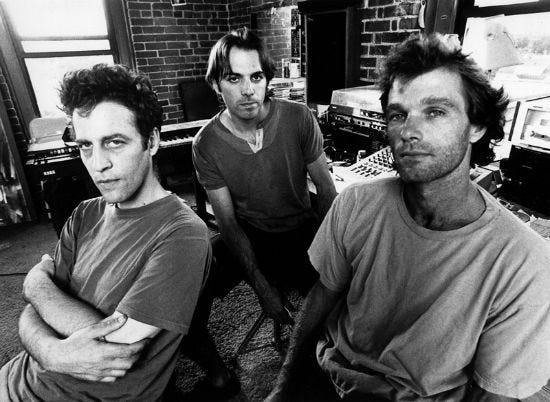Morphine: Journey of Dreams

Like a lot of people, my pop music education essentially stopped right after college. I don’t think the music that you grow up with can ever be truly replaced by anything that comes after. It’s the soundtrack of your youth; it’s the musical score of the movie of you.
So I’d never heard of the band Morphine, though they apparently were a semi-big deal in the 1990s, part of the indie rock movement where people making and recording music in their homes really could go on to play in front of crowds of thousands.
“Morphine: Journey of Dreams” is filmmaker Mark Shuman’s attempt to reconstruct the saga of the band’s quick rise and quicker fall from grace. It ends up being a paean to lead singer and songwriter Mark Sandman, whose sullen lyrics, laidback vocals and “low rock” style pioneered a brash in-between sound wandering somewhere between blues and hard rock.
I don’t think I’m giving much away by telling you that Sandman died in 1999, right as the band was on the verge of breaking through. After all, we get to see interviews of the other Morphine band members and helpers, now older and wiser, talking about their time together, and it’s natural to wonder why Sandman isn’t among them. Plus, Shuman invests the whole film with the reverential timbre of a dirge.
And, of course, we live in the age of Google where you can find out almost anything, instantly. So I learn that Sandman died of a massive heart attack at the age of 46 while performing onstage at a rock festival in the beautiful Italian hillside village of Palestrina, at the feet of an ancient towering church called the Temple of Fortune.
If that isn’t the most goddamn romantic death you’ve ever heard of, then I don’t know what is.
Shuman goes for a more or less straight journalism type of exploration, talking to other members of Morphine – original drummer Jerome Deupree, Billy Conway, who replaced Deupree when he clashed with Sandman, and saxophonist Dana Colley.
I also appreciated that the film interviews key support people like their regular soundman, publicist, manager and tour manager -- the sort of people who remain out of the limelight but are integral to a band’s evolution and success (and often have the best stories to tell).
On top of that we’ve got some name music figures like Joe Strummer, Henry Rollins and Steve Berlin offering their own glowing assessment of Morphine’s place in the oeuvre.
The sound of Morphone is very distinct, sparse with just three instruments and no guitar, only Sandman’s two-string slide bass and Colley’s baritone sax joining with Sandman’s deep-voiced vocals. Along with the drums, everything registers more or less on the same harmonic level, which sounds like it would get old fast, but doesn’t. Sandman’s lyrics tended to be morose and downbeat, too.
We’re led through all the story of Morphine, which started as a side gig to Treat Her Right, Sandman’s main band. When that broke up he and Deupree started jamming together, adding Colley – who’d been a tech on the final tour of Treat Her Right – as almost an afterthought, but which brought the whole thing together.
Colley and Conway are both good memorialists for Sandman, recalling both his utter devotion to musical fidelity and his secretiveness about his own background. We learn some things that may help explain Sandman’s death at such a young age – which, given the name of the band and its moody sound, many people have assumed was due to drug use.
“Morphine: Journey of Dreams” is a solid rock documentary, telling us just about everything we could wish to know about a band that, during its active life, never became important enough that we thought we needed to hear about it. Movies like this provide an echo of what could’ve been, and what we have missed out on.



